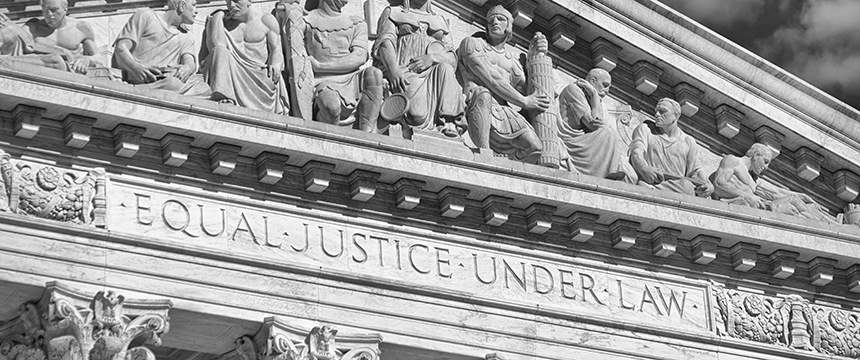Supreme Court Clarifies Scope of Federal Fraud Statutes in Connection with False DBE Reporting on Federally Funded Projects

On May 22, 2025, the U.S. Supreme Court issued a significant decision in Kousisis v. United States, affirming a six-year prison sentence for a contractor convicted of federal wire fraud for misrepresenting use of a disadvantaged business enterprise (DBE) supplier on a project. The Court held that inducing a victim to enter into a transaction under materially false pretenses — even if the defendant did not intend to cause economic loss — gives rise to criminal liability. This ruling has important implications for contractors engaged in federally funded projects, particularly concerning compliance with criminal fraud statutes and related regulations and rules.
Case Summary
In Kousisis v. United States, the petitioners, Stamatios Kousisis (Kousisis) and Alpha Painting and Construction Co. (Alpha), secured contracts from the Pennsylvania Department of Transportation (PennDOT) that required a portion of the work to be subcontracted to DBEs. To satisfy the DBE requirement and obtain PennDOT’s contract, Kousisis falsely represented that Alpha would obtain paint supplies from Markias, Inc. (Markias), a certified DBE. In reality, Kousisis never intended to obtain supplies from the DBE and, in plan and practice, Markias acted only as a pass-through entity. Markias’ only role was to “pass through” checks and invoices to and from Alpha’s actual suppliers. Kousisis therefore violated the requirement that DBEs perform a “commercially useful function” under 49 CFR § 26.55(c). The Court described the petitioners’ scheme as follows:
By using Markias as a pass-through entity, petitioners ‘devised’ a ‘scheme’ to obtain contracts through feigned compliance with PennDOT’s disadvantaged-business requirement. Their goal? To ‘obtai[n] money’ (tens of millions of dollars) from PennDOT. And how? By making a number of ‘false or fraudulent . . . representations’ — first about their plans to obtain paint supplies from Markias and later about having done exactly that (internal citations omitted).
Although Alpha satisfactorily completed the projects and PennDOT received the contracted services, the Supreme Court held that Kousisis’ fraudulent inducement — misrepresenting compliance with DBE requirements to obtain the contract — was sufficient for a criminal wire fraud conviction under 18 U.S.C. § 1343.
The Court emphasized the statute does not necessitate proof of economic loss to a victim; rather, the focus is on the defendant’s deceptive conduct to obtain money or property. In other words, the Court found Kousisis’ lies and scheme induced PennDOT to contract with, and pay, Kousisis money, thereby violating Section 1343.
Implications for the Construction Industry and Government Contractors More Generally
Reaffirmed Criminal Liability When Lies Induce Payment
The thrust of the appellant’s argument was that because PennDOT got what it paid for (i.e., paint supplies), the agency was not defrauded. The Court disagreed, ruling that because the object and result of this scheme was to obtain money or property, it was wire fraud: “. . . a scheme may still constitute wire fraud even if the defendant provides something of value in return.”
Importance of Accurate Representations
Contractors must ensure that all certifications and representations made during the procurement process are accurate and substantiated. This includes compliance with DBE requirements and also ensuring that DBE entities actually perform commercially useful functions. The Court in Kousisis clarifies that using an engaged DBE entity to divert checks or invoices to other non-DBE entities, who performed the substantive work, is not a commercially useful function.
Enhanced Compliance Programs
Construction firms and other government contractors should review their compliance programs to include oversight of subcontracting practices and certifications. Regular audits and training can help prevent inadvertent misrepresentations and ensure adherence to federal funding requirements.
Potential for Increased Enforcement
The ruling may embolden federal agencies to pursue enforcement actions against contractors based on misrepresentations, even absent direct financial harm to the government. This could lead to an uptick in government scrutiny within the construction sector and for other government contractors.
Conclusion
The Supreme Court’s decision in Kousisis v. United States serves as a critical reminder of the stringent standards applied to contractors under fraud statutes. Construction companies and other contractors engaged in even partially federally funded projects must exercise heightened diligence in their compliance efforts to avoid potential liability. Our Government Enforcement Defense & Investigations, Government Procurement, and Construction teams are closely tracking developments in this area and are available to assist with compliance reviews, policy assessments, and defense strategy. If have any questions about the Supreme Court decision or DBEs, reach out to any of the authors or your Foley & Lardner attorney.



